The Magic of Symbolism in Film: It’s All Up to Your Imagination!
Ah, movies! The magical realm where dreams come alive and popcorn is a food group.
I’ve always been a movie buff—let’s just say my social life has often revolved around the flickering light of a projector and the scent of buttered popcorn wafting through the air.
Movies have been my escape, my source of inspiration, and the foundation of my questionable taste in philosophical debates. You know, the kind that leaves you scratching your head and nodding thoughtfully while secretly wondering if you left the oven on at home.
As a teenager, I didn’t lock myself away in my room brooding over dark poetry like most moody youths.
No, I took a more sophisticated route: slipping into a dark cinema and basking in the moody brilliance of masters like Bergman and Wim Wenders. My cinematic choices were like a rite of passage—a crash course in existential musings where the only thing heavier than the dialogue was the symbolism.
Let’s take a moment to discuss this mysterious creature known as symbolism in film.
It’s a bit like that hidden menu item at your favourite restaurant—everyone talks about it, but you don’t really know what to expect until you dive in.
Film symbolism cleverly uses imagery, colours, objects, or even characters to convey deeper meanings. It’s the director’s way of whispering secrets to the audience, inviting us to ponder and interpret what we see.
While some symbols are universal—like a stormy sky indicating doom or a bright sun suggesting hope—others are more nuanced, tailored to a film’s specific context.
The beautiful thing about symbolism is that it’s not set in stone. The meaning you derive from a film might completely differ from what the director intended. It’s like deciphering your friend’s vague Instagram captions—everyone has their own interpretation.
7 Classic Examples of Film Symbolism.
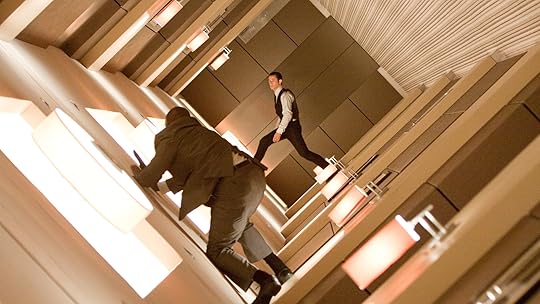
#1 – The Rotating Hallway in Inception (2010).
Ah, Inception! A film that had us all questioning our grip on reality.
Christopher Nolan’s masterpiece features a spinning hallway that’s more than just a gravity-defying stunt. This dizzying environment represents the unpredictable nature of dreams.
As Joseph Gordon-Levitt’s character fights an enemy in a shifting corridor, we’re reminded that reality is as stable as your Wi-Fi connection—unpredictable and often shaky.
This clever visual metaphor illustrates the chaos of the human subconscious, inviting us to ponder the complexities of our own minds.
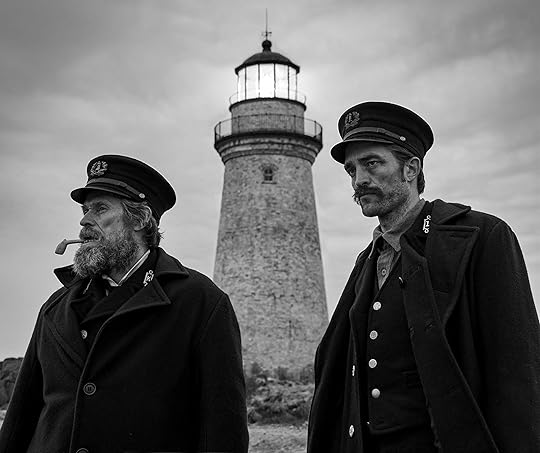 #2 – The Lighthouse in The Lighthouse (2019).
#2 – The Lighthouse in The Lighthouse (2019).
In Robert Eggers’ psychological horror film, the titular lighthouse is anything but a straightforward beacon.
For Willem Dafoe’s character, it’s a god-like figure demanding reverence, while for Robert Pattinson’s character, it becomes an obsession that drives him to madness.
The lighthouse’s blinding light represents enlightenment—something that can be both illuminating and overwhelming.
This complex symbol invites us to consider the thin line between clarity and insanity.
Or, in simpler terms, how sometimes, knowing too much can drive you a little nuts.
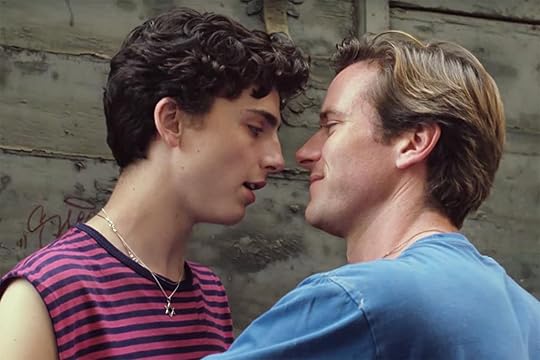
#3 – The Peaches in Call Me by Your Name (2017).
Let’s talk about peaches, shall we?
In Call Me by Your Name, this juicy fruit becomes a metaphor for desire and intimacy.
Elio’s (Timothée Chalamet) tender encounter with a peach reflects his raw, vulnerable emotions as he navigates his budding relationship with Oliver (Armie Hammer).
It’s all very poetic until you remember you’re just watching a movie about a summer romance. The peach symbolizes the fleeting nature of love and the bittersweet beauty of first experiences.
So next time you bite into a peach, remember—it’s not just a snack; it’s a reminder of the fragile sweetness of youth.
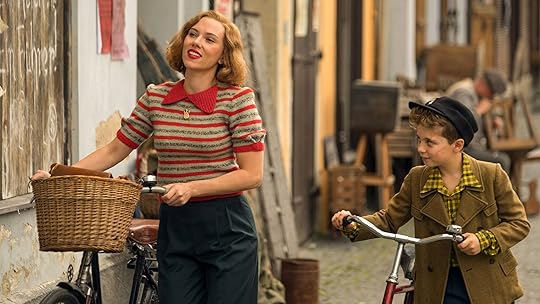
#4 – Shoes in Jojo Rabbit (2019).
In Jojo Rabbit (2019), Taika Waititi employs the symbolism of shoes to explore the harsh realities of Hitler’s Germany through the eyes of a child.
The film depicts how hatred can seep into young minds, with Jojo’s imaginary friend, Adolf Hitler, serving as a manifestation of his indoctrination.
Shoes become a powerful motif that weaves through the narrative, representing both identity and loss.
A poignant moment occurs when Jojo observes his mother, Rosie (Scarlett Johansson), dancing in her shoes, which later become a haunting reminder of her fate when he recognizes her hanging from the gallows.
This heartbreaking imagery encapsulates the trauma and genocide of war, emphasizing that shoes often signify the remnants of lives lost under an oppressive regime. Jojo’s character arc further illustrates this symbolism; as he kicks away his imaginary Hitler, he transitions from his mother lacing his shoes to lacing up Elsa’s (Thomasin McKenzie), marking his liberation from Nazi fanaticism.t.
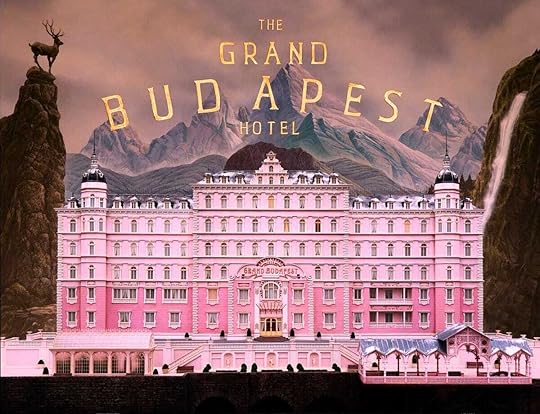
#5 – The Color Pink in The Grand Budapest Hotel (2014).
In The Grand Budapest Hotel, the color pink serves as a powerful symbol of nostalgia, elegance, and the transience of beauty.
The hotel itself, with its striking pink facade, represents a bygone era of grandeur and charm, evoking a sense of warmth and luxury that contrasts sharply with the film’s darker themes of chaos and violence.
This vibrant hue is intricately woven throughout the film, from the lavish interiors to the characters’ costumes, emphasizing the fleeting nature of both the hotel’s glory and M. Gustave H.’s (Ralph Fiennes) character.
As the narrative unfolds against a backdrop of war and moral decline, the recurring pink motifs highlight the tension between the allure of the past and the harsh realities of the present. Ultimately, the color pink encapsulates the film’s exploration of memory and the fragility of beauty, serving as a poignant reminder of the elegance that once was, now overshadowed by inevitable loss.
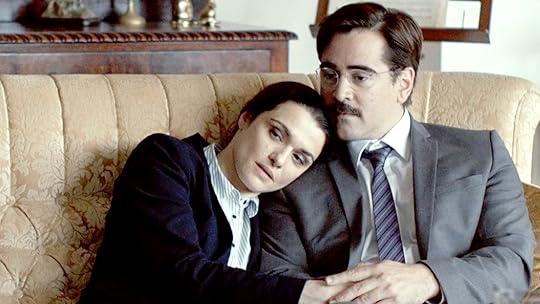 #6 – The Dog in The Lobster (2015).
#6 – The Dog in The Lobster (2015).
In The Lobster (2015), the dog serves as a poignant symbol of loyalty and the profound loss of individuality, embodying David’s (Colin Farrell) brother, who has been transformed into an animal after failing to find a romantic partner.
This transformation underscores the harsh realities of a society that reduces human relationships to mere survival, stripping individuals of their identities and autonomy.
The dog’s presence represents the emotional toll of conformity, as he retains an affectionate bond with David, signifying the enduring connections that persist despite the absurdity of their circumstances. Their interaction highlights the bittersweet nature of familial love and the sacrifices made in the pursuit of acceptance.
As David navigates the oppressive rules of his world, his brother’s transformation into a dog serves as a stark reminder of the potential consequences of societal expectations, reinforcing the film’s critique of the lengths to which people must go to attain companionship in a conformist society.
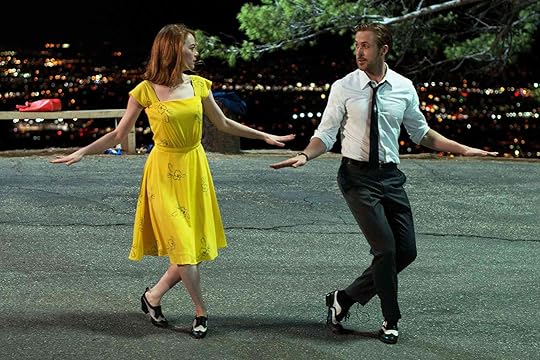
#7 – The Yellow Dress in La La Land (2016).
And finally, we arrive at the yellow dress in La La Land. In La La Land, the yellow dress worn by Mia (Emma Stone) during the “A Lovely Night” dance sequence symbolizes the blossoming romance between her and Sebastian (Ryan Gosling).
The vibrant color stands out reflecting the joy and excitement of their connection. As they dance under the stars, the dress captures the enchanting moment where their aspirations and feelings intertwine, embodying the hope and possibility of love.
The bright hue of the dress mirrors Mia’s optimism as she opens her heart to Sebastian, contrasting with the struggles they both face in pursuing their dreams.
This romantic moment is filled with a sense of magic and whimsy, emphasizing the beauty of new beginnings in both love and life.
Ultimately, the yellow dress serves as a visual metaphor for the warmth and tenderness of their budding relationship, encapsulating the essence of passion and ambition that defines their journey together.
In Conclusion – As you immerse yourself in the magical world of film, remember that symbolism is not a one-size-fits-all experience. Each of these examples offers a canvas for our interpretations, inviting us to see beyond the surface and engage with the film on a deeper level. The beauty of cinema lies in its ability to spark discussion, elicit emotions, and provoke thoughts—often leading to wildly different interpretations.
In the end, whether you’re munching popcorn in a theater or discussing your favorite films with friends, remember that your interpretation of symbolism is just as valid as the director’s. So embrace the quirks, the absurdities, and the profound moments, and let your imagination run wild. Because, in the realm of film, the meaning is always up to you!
Now it’s YOUR turn – What other films effectively use symbolism?
Would love to get your input in the comment box below.
The post The Magic of Symbolism in Film: It’s All Up to Your Imagination! appeared first on Vered Neta.



